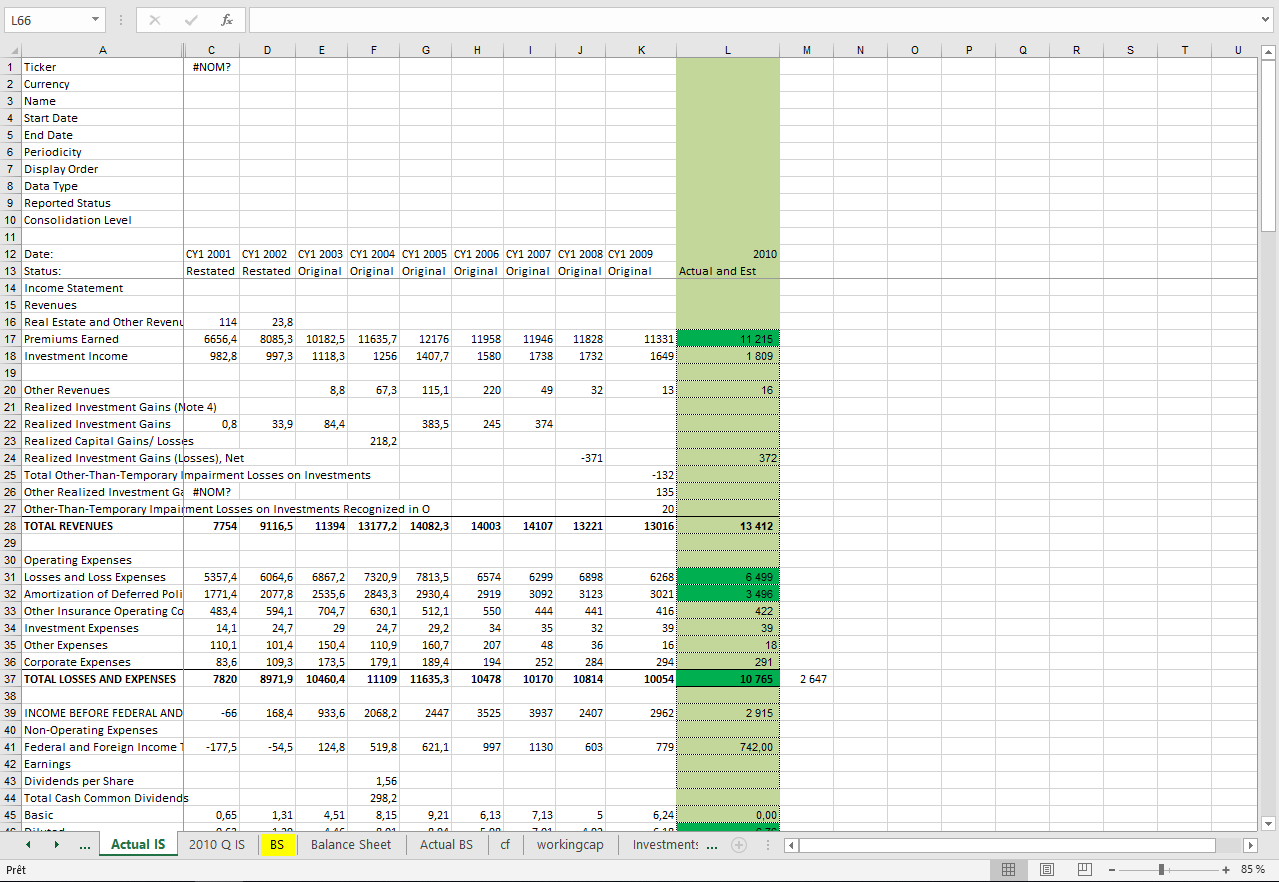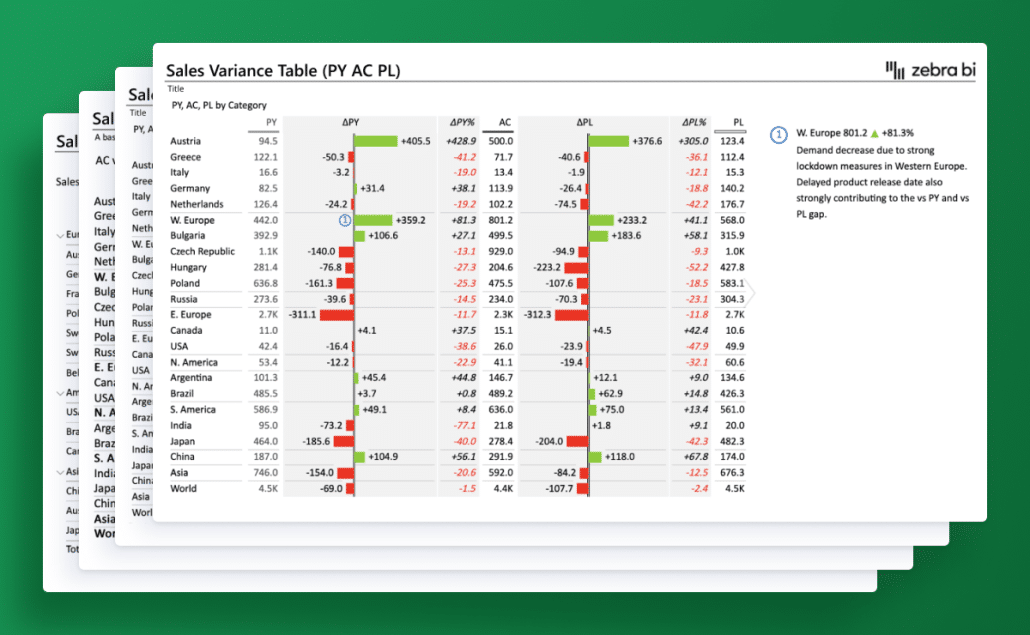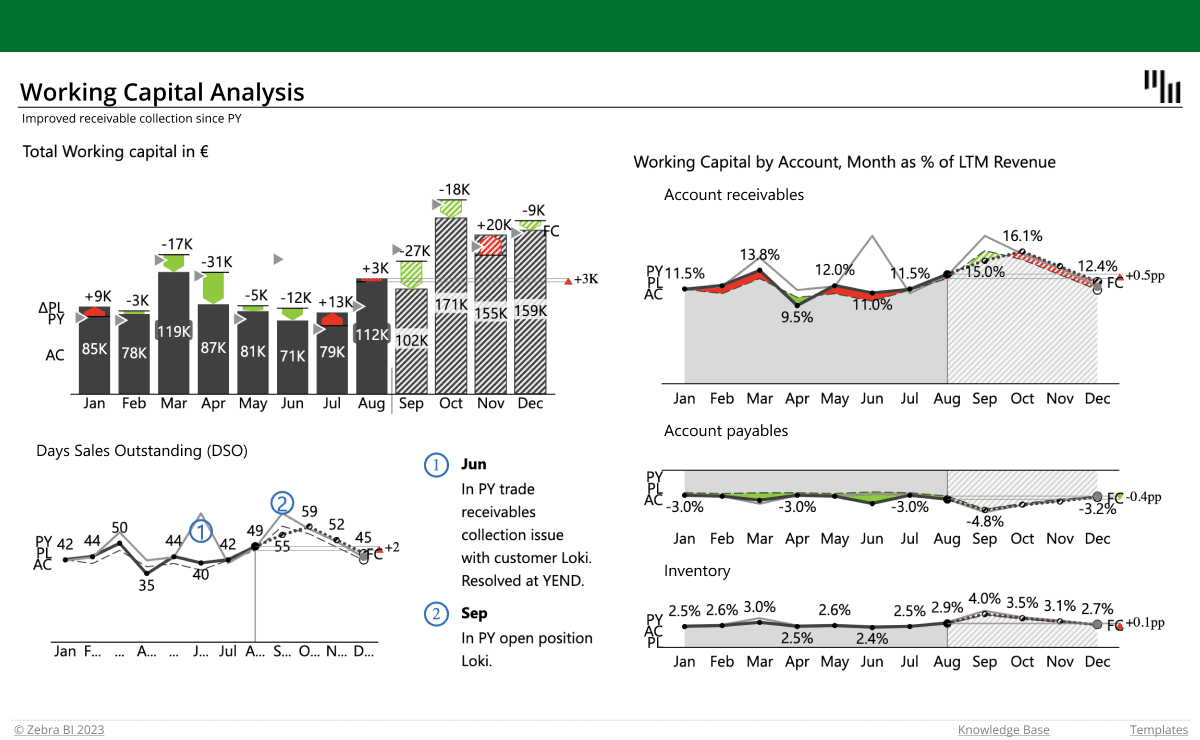
Model Working Capital Adjustments in Excel
Model working capital adjustments in Excel empowers businesses to refine financial statements, making informed decisions. This guide delves into the intricacies of working capital, its adjustments, and how to effectively implement these strategies using Excel. From defining working capital’s importance to exploring different adjustment methods and scenarios, we’ll walk you through the entire process.
This comprehensive guide details the steps to calculate, validate, and report on working capital adjustments using Excel. We’ll cover practical examples and scenarios to demonstrate how these adjustments contribute to accurate financial analysis and business forecasting.
Introduction to Working Capital Adjustments

Working capital is the difference between a company’s current assets (like cash, accounts receivable, and inventory) and its current liabilities (like accounts payable and short-term debt). It’s a crucial metric for assessing a company’s short-term financial health and its ability to meet its immediate obligations. A healthy working capital position indicates the company can cover its short-term debts and operate efficiently.
Poor working capital management can lead to liquidity problems and financial distress.Working capital adjustments are vital in financial analysis because they help to refine the reported figures on financial statements. These adjustments often aim to remove non-recurring or non-operational components from working capital, providing a more accurate picture of a company’s core operating performance. This allows for better comparisons across different periods and companies, as well as better forecasting for future performance.
Common Working Capital Adjustments
Working capital adjustments often focus on items like inventory, accounts receivable, and accounts payable. The goal is to isolate the truly operational aspects of working capital. This process involves making adjustments to reflect the normal or expected levels for these items. This often involves analyzing trends, industry benchmarks, and specific business practices.
Types of Working Capital Adjustments
- Inventory Adjustments: These adjustments often address unusual inventory levels. For instance, a company experiencing a sudden spike in inventory might have an unusually high level compared to the historical trend, or the industry norm. This is often indicative of a problem such as inefficient production or a poor sales forecast, which should be investigated. Adjustments might be made to reflect a more typical inventory level for the business, taking into account the industry norms and the company’s normal operating cycles.
- Accounts Receivable Adjustments: Unusual patterns in accounts receivable (money owed to the company) might signal issues like slow collections or overly lenient credit terms. A significant increase or decrease in accounts receivable, compared to historical data, needs careful analysis. Adjustments are made to reflect the expected level of accounts receivable for the business, reflecting industry standards or the company’s typical collection period.
A prolonged delay in collection can impact the company’s cash flow.
- Accounts Payable Adjustments: Adjustments to accounts payable (money owed by the company) focus on identifying unusual payment patterns. A significant deviation from the company’s typical payment terms or industry norms could indicate problems with supplier relationships or potential financial difficulties. Adjustments might be made to reflect the company’s typical payment terms and industry practices, ensuring that the payment period aligns with expected standards.
- Prepaid Expenses Adjustments: These adjustments focus on prepaid expenses like insurance or rent. A large amount of prepaid expenses compared to historical norms might suggest a potential overestimation of future expenses or a need for further investigation into the company’s operational processes.
Categorization of Working Capital Adjustments
| Category | Description |
|---|---|
| Inventory | Adjusting for unusual inventory levels, reflecting normal operating cycles and industry benchmarks. |
| Accounts Receivable | Adjusting for unusual collection patterns, reflecting typical credit terms and industry standards. |
| Accounts Payable | Adjusting for unusual payment patterns, reflecting typical payment terms and industry norms. |
| Prepaid Expenses | Adjusting for unusual prepaid expense levels, reflecting typical expense recognition patterns. |
Excel Implementation for Working Capital Adjustments
Implementing working capital adjustments in Excel is a crucial step in financial modeling and analysis. Accurate calculations are essential for assessing a company’s liquidity and efficiency. This section will guide you through the process, highlighting key formulas and techniques to ensure precision and clarity in your analysis.
Basic Steps for Implementation
The fundamental steps for implementing working capital adjustments in Excel involve data input, formula application, and validation. First, meticulously input historical data for relevant accounts like inventory, accounts receivable, and accounts payable. Then, apply appropriate formulas to calculate the adjustments. Finally, validate the results by comparing them to industry benchmarks and company trends. This systematic approach ensures accuracy and facilitates the identification of potential issues or opportunities.
Using Formulas and Functions
Excel offers a rich set of functions to streamline working capital adjustments. For instance, the SUM function is useful for aggregating values across different periods. The AVERAGE function can be used to calculate average balances over time. The IF function allows for conditional adjustments, enabling different calculations based on specific criteria. These functions, when applied correctly, provide a robust framework for calculating and interpreting working capital adjustments.
Conditional Formatting for Highlighting Adjustments
Conditional formatting in Excel is a powerful tool for visualizing working capital adjustments. By highlighting cells that exceed or fall below certain thresholds, you can quickly identify areas needing further investigation. For example, you can color-code cells with inventory levels that deviate significantly from expected norms or accounts receivable that are overdue. This visual approach enhances analysis and makes crucial trends immediately apparent.
Examples of Different Scenarios
Consider a scenario where you need to adjust inventory levels for a company. You can use the AVERAGE function to calculate the average inventory balance over the past year. This average can then be used to compare with industry averages or previous years’ data. Another scenario might involve adjusting accounts receivable. You could use the SUM function to calculate the total amount of outstanding invoices and the IF function to flag invoices that are overdue for more than 30 days.
Such detailed breakdowns offer valuable insights into the company’s financial health and performance.
Common Excel Functions
Mastering these functions will significantly improve your efficiency in implementing working capital adjustments. Their precise application is essential for accurate analysis and interpretation.
- SUM: Sums numerical values across a range of cells.
- AVERAGE: Calculates the average of numerical values in a range.
- IF: Performs a logical test and returns one value if the test is true, another if it is false.
- COUNT: Counts the number of cells in a range that contain numbers.
- VLOOKUP: Looks up a value in a table and returns a corresponding value from another column in the same row.
- ROUND: Rounds a number to a specified number of decimal places.
- DATE: Returns a date.
Formulas for Common Working Capital Adjustments
The following table Artikels formulas for common working capital adjustments, demonstrating how Excel can be used to efficiently manage the calculation process.
| Adjustment | Formula | Description |
|---|---|---|
| Inventory Adjustment | =AVERAGE(B2:B12)-B13 | Calculates the difference between the average inventory over a period and the current inventory. |
| Accounts Receivable Adjustment | =SUM(C2:C12)*0.10 | Calculates 10% of the total accounts receivable to estimate the adjustment. |
| Accounts Payable Adjustment | =SUM(D2:D12)-SUM(D13:D14) | Calculates the difference between the total accounts payable and any prepayments. |
Methods for Calculating Adjustments
Working capital adjustments are crucial for accurate financial analysis. These adjustments refine reported figures to reflect the true underlying economic performance of a business. Understanding the various methods for calculating these adjustments allows for a more nuanced interpretation of financial statements, leading to better decision-making.
Inventory Adjustment Methods
Inventory adjustments are vital for aligning reported inventory values with their market or replacement cost. Different methods exist for determining the appropriate adjustment, each with its own set of advantages and disadvantages. Choosing the correct method is critical to ensuring the accuracy of financial statements.
- First-In, First-Out (FIFO): This method assumes the first units purchased are the first ones sold. Under FIFO, the cost of goods sold (COGS) reflects the cost of the oldest inventory. This often leads to a higher reported profit during periods of rising prices, as the cost of goods sold is lower than the cost of newer inventory. A simple example is a bakery selling bread.
The bread baked and sold first is assumed to be the first bread made, while the bread baked and still on the shelf is assumed to be the newer bread.
- Last-In, First-Out (LIFO): This method assumes the most recently purchased units are the first ones sold. Under LIFO, COGS reflects the cost of the newest inventory. This results in a lower reported profit during periods of rising prices, as the cost of goods sold is higher than the cost of older inventory. Consider a hardware store selling nails. The nails purchased last are assumed to be the ones sold first.
- Weighted-Average Cost: This method calculates the average cost of all inventory items available for sale. The average cost is then used to determine the cost of goods sold. This method smooths out fluctuations in inventory costs, providing a more stable measure of COGS. An example is a retailer purchasing various items of clothing; the average cost is used for each item sold.
- Specific Identification: This method tracks the cost of each individual inventory item. This is most suitable for unique or high-value items, like automobiles or custom-made jewelry. The exact cost of each item is used to calculate COGS. This method provides the most accurate cost of goods sold, but it can be time-consuming and impractical for large inventories.
Accounts Receivable and Payable Adjustments
Adjustments to accounts receivable and payable balances are essential for reflecting the true value of these assets and liabilities. These adjustments help ensure accurate profitability and cash flow analysis.
- Allowance for Doubtful Accounts: This adjustment accounts for potential bad debts in accounts receivable. A percentage of outstanding receivables is written off as uncollectible, reducing the reported value of receivables. For example, if a company expects 5% of its outstanding receivables to be uncollectible, it would create an allowance for doubtful accounts equal to 5% of the total receivables.
- Adjustments for Discounts and Returns: Adjustments should be made for any discounts offered to customers or for returns. Discounts decrease the amount receivable, while returns increase the amount owed. This adjustment reflects the true amount expected to be collected. For instance, if a customer receives a 10% discount on their purchase, the receivable amount should be reduced by 10%. If the customer returns the goods, the receivable is reduced by the return amount.
- Accrued Interest on Accounts Receivable/Payable: If there are outstanding balances on accounts receivable or payable that accrue interest, the interest should be added to the respective balance. This reflects the true cost of borrowing or the true revenue from lending. If a company has an account payable with interest accrued, the total amount payable includes the interest.
Comparison of Adjustment Methods
Different adjustment methods have varying implications for financial reporting. Choosing the appropriate method requires careful consideration of the specific circumstances and industry practices.
| Adjustment Method | Pros | Cons |
|---|---|---|
| FIFO | Simpler to implement, often reflects current market prices | May overstate profits in inflationary periods, potentially distorting financial statements |
| LIFO | May result in lower profits during inflationary periods, potentially reflecting a more conservative view | Can be more complex to implement, and may not reflect current market prices |
| Weighted-Average Cost | Provides a smoother measure of COGS, less susceptible to fluctuations | May not reflect current market prices as accurately as FIFO or LIFO |
| Specific Identification | Most accurate for high-value items | Can be extremely complex for large inventories, impractical for most businesses |
Impact of Costing Methods on Inventory Adjustments
The chosen inventory costing method significantly impacts inventory adjustments and the reported financial performance. Different costing methods lead to varying reported profits and COGS. For example, during periods of rising prices, FIFO results in higher reported profits compared to LIFO.
Factors to Consider When Choosing an Adjustment Method
Several factors influence the selection of an appropriate adjustment method. These factors include the nature of the inventory, the industry standards, and the desired level of accuracy.
- Nature of the inventory: Unique or high-value items may require specific identification, while standardized goods might be suitable for weighted-average cost.
- Industry standards: Certain industries may have specific guidelines for inventory valuation.
- Desired level of accuracy: The level of precision required in the financial statements will affect the complexity of the chosen method.
Practical Scenarios and Applications

Working capital adjustments are crucial for a comprehensive financial analysis, enabling businesses to gain a deeper understanding of their true operational performance. By isolating the impact of working capital fluctuations, companies can better evaluate profitability, forecast future performance, and make sound strategic decisions. This section delves into specific scenarios and real-world examples showcasing the practical applications of these adjustments.
Scenario: Evaluating a Retail Business’s Profitability
Retail businesses often experience significant fluctuations in inventory levels and accounts receivable. Working capital adjustments help isolate the impact of these changes on net income, revealing the underlying profitability of the core business operations. Without adjustments, seasonal inventory increases or slow-paying customers could artificially inflate or deflate profit margins, masking the true operational efficiency.
Real-World Example: A Manufacturing Company
Consider a manufacturing company experiencing rapid growth. Increased sales necessitate higher inventory levels, but these increased levels also tie up capital. Working capital adjustments reveal the impact of this increased investment on profitability. By adjusting for the increase in inventory, the company can more accurately assess the profitability of the new production volumes and associated sales.
Assessing Profitability with Adjustments
Working capital adjustments are fundamental to accurately assess a company’s profitability. By separating the impact of working capital from core operating income, companies can gain a clearer picture of their core profitability and identify areas for improvement. For instance, if a company’s net income appears to be rising, but working capital adjustments reveal a decline in operating income, the company can focus on streamlining processes or increasing sales to mitigate the effect of working capital changes.
Forecasting Future Performance
Working capital adjustments enable businesses to forecast future performance more accurately. By understanding the dynamics of their working capital, companies can anticipate the impact of expected changes in sales, inventory levels, and collections on their financial statements. This proactive approach allows for better planning and resource allocation. For example, if a company anticipates a surge in sales, they can anticipate the need for additional working capital to support inventory and receivables, allowing them to plan accordingly.
Detailed Example: A Food Processing Company
A food processing company experiences seasonal variations in production and sales. In the peak season, inventory levels rise significantly. Without working capital adjustments, the company’s reported profitability could appear artificially high in the peak season and low in the off-season, masking the true consistency of profitability. Adjustments for the change in inventory levels and accounts receivable allow a more realistic assessment of the company’s performance across different periods.
The effect on profitability is clearly visualized by isolating the change in working capital from the core operating income.
| Month | Sales (USD) | Cost of Goods Sold (USD) | Inventory (USD) | Working Capital Adjustment (USD) | Adjusted Operating Income (USD) |
|---|---|---|---|---|---|
| January | 100,000 | 60,000 | 10,000 | (2,000) | 28,000 |
| February | 80,000 | 48,000 | 8,000 | (1,000) | 29,000 |
| March | 120,000 | 72,000 | 12,000 | (4,000) | 36,000 |
This table illustrates how working capital adjustments can be applied to a food processing company. Notice how the adjusted operating income provides a more accurate picture of the company’s underlying profitability compared to the raw sales figures. The table shows the impact of seasonal fluctuations in inventory levels on the operating income. These adjustments allow for a more realistic assessment of profitability over time.
Data Input and Validation Techniques
Accurate data entry is paramount for reliable working capital adjustments. Inaccurate data can lead to skewed financial analysis, incorrect forecasting, and ultimately, poor business decisions. Ensuring data integrity is crucial for the success of any working capital adjustment model.Thorough validation of input data in Excel is essential to maintain data accuracy. This process involves scrutinizing the entered data for compliance with predetermined rules, identifying and correcting any inconsistencies, and ultimately ensuring that the data used in calculations is trustworthy.
Importance of Accurate Data Entry
Accurate data entry forms the bedrock of reliable working capital adjustments. Mistakes in inputting data, even seemingly minor ones, can propagate throughout the calculations, leading to significant errors in the final results. This inaccuracy can result in misleading financial insights, impacting decision-making processes and potentially leading to unfavorable outcomes.
Data Validation Techniques in Excel
Excel offers powerful data validation tools to prevent errors during data entry. These tools allow users to define specific rules that input data must adhere to, such as limiting input to certain data types (numbers, dates, text), setting minimum and maximum values, and ensuring data consistency. Implementing these validation rules significantly reduces the risk of errors.
Using Data Validation Tools
Data validation tools in Excel provide a structured approach to ensuring data integrity. These tools can be used to prevent invalid entries, such as ensuring that inventory levels are not negative or that sales figures are positive. These safeguards prevent the introduction of erroneous data into the working capital adjustment model.
Tracking and Auditing Adjustments
Tracking and auditing adjustments is vital for maintaining transparency and accountability. A clear audit trail records all adjustments made, including the date, time, user, and reason for each change. This approach facilitates the review and verification of adjustments, ensuring the reliability and trustworthiness of the model. A well-maintained audit trail allows for the identification of any discrepancies or errors in the adjustment process.
Data Validation Rules for Adjustment Categories, Model working capital adjustments in excel
| Adjustment Category | Data Type | Validation Rule | Example |
|---|---|---|---|
| Inventory | Number | Value must be greater than or equal to 0 | Cannot enter -100 for inventory |
| Accounts Receivable | Number | Value must be greater than or equal to 0 | Cannot enter -500 for accounts receivable |
| Accounts Payable | Number | Value must be greater than or equal to 0 | Cannot enter -200 for accounts payable |
| Sales | Number | Value must be greater than or equal to 0 | Cannot enter -1500 for sales |
Implementing Error Handling Procedures
Error handling procedures are critical for managing unexpected inputs or errors during the adjustment process. These procedures should include mechanisms for identifying and flagging erroneous data, providing informative error messages to the user, and offering options for correcting the errors. Implementing error handling ensures the model’s robustness and reliability. The error handling process should also include the ability to roll back incorrect entries to avoid propagating errors through the model.
Reporting and Presentation of Results

Presenting working capital adjustments effectively is crucial for conveying the impact of these adjustments on a company’s financial health. Clear, concise reports and visualizations are essential for stakeholders to understand the changes and their implications. This section details the structure and presentation of these reports, emphasizing best practices for clarity and impact.Effective reporting of working capital adjustments requires a structured approach.
The presentation should clearly communicate the methodology used, the results obtained, and the implications of these adjustments for the company’s overall financial performance.
Report Structure
The report should begin with an executive summary highlighting the key findings and recommendations arising from the working capital adjustments. Following this, a detailed breakdown of the adjustments is presented, including the specific accounts affected and the rationale behind the adjustments. A crucial component is the supporting documentation for each adjustment, such as supporting spreadsheets or notes, for thoroughness and verification.
Include a section summarizing the overall impact on key financial metrics.
Presenting the Results
Presenting the results of working capital adjustments effectively involves using a combination of text and visuals. Tables are highly effective for presenting numerical data, enabling comparison across different periods or scenarios. Use clear and concise language to explain the results and avoid jargon that might confuse readers. Focus on the implications for the company’s profitability and cash flow.
Importance of Clear Labeling and Formatting
Clear labeling and formatting are essential for ensuring the report is easily understood. Use consistent formatting throughout the report for consistency and readability. Avoid ambiguity by using precise and unambiguous labels for each adjustment and associated data points. Formatting should enhance comprehension, not obscure it. Use appropriate font sizes and colors to create a visually appealing and accessible report.
Best Practices for Visualizing Data
Visualizations such as charts and graphs are vital for highlighting the impact of working capital adjustments. Line charts can effectively illustrate trends in working capital over time, showing the impact of adjustments on key metrics like net working capital or current ratio. Bar charts are suitable for comparing the values of different accounts before and after adjustments. Use appropriate chart types to effectively communicate the information.
Ensure that all charts and graphs are clearly labeled with titles, axis labels, and data sources.
Sample Report
Working Capital Adjustment Analysis – Q3 2024
Executive Summary: Working capital adjustments for Q3 2024 show a positive impact on net working capital. Inventory reductions and accelerated collections resulted in a significant improvement in cash flow.
Account Q3 2023 Q3 2024 (Adjusted) Adjustment Inventory $100,000 $80,000 -$20,000 Accounts Receivable $60,000 $50,000 -$10,000 Accounts Payable $40,000 $45,000 +$5,000 Net Working Capital $120,000 $115,000 -$5,000 Impact on Cash Flow: The adjusted working capital resulted in a projected increase of $15,000 in cash flow over Q3 2023.
Do not overlook explore the latest data about cima ethics confidentiality rules.
Visualizing the Impact with Charts and Graphs
Visualizations effectively communicate the impact of adjustments. For instance, a line graph showcasing the trend of net working capital over time, with the adjusted values highlighted, clearly demonstrates the improvement in working capital efficiency. Use appropriate charts and graphs to visualize the data.
Troubleshooting and Common Errors
Working capital adjustments, while crucial for financial analysis, are susceptible to errors in Excel. Careful attention to detail and a methodical approach are paramount to achieving accurate results. Understanding potential pitfalls and implementing effective troubleshooting strategies is essential for producing reliable working capital adjustments.
Common Excel Errors in Working Capital Adjustments
Identifying and rectifying errors in Excel calculations is crucial for accurate working capital adjustments. These errors can stem from various sources, including data entry mistakes, formula misapplication, or incorrect formatting. Recognizing these issues and implementing effective troubleshooting steps are key to achieving accurate results.
Troubleshooting Guide for Excel Errors
This guide Artikels common errors encountered during working capital adjustments in Excel and their corresponding solutions.
- Incorrect Data Entry: Mistakes in entering data (e.g., wrong account balances, incorrect dates) directly impact the accuracy of calculated adjustments. Double-checking data entry and using validation features in Excel helps prevent such errors.
- Formula Errors: Misapplying or misusing formulas (e.g., incorrect syntax, inappropriate functions) can lead to inaccurate results. Thorough review of formula logic, using formula auditing tools, and verifying expected outcomes against known values are crucial.
- Formatting Issues: Incorrect formatting of data (e.g., incorrect cell formats, currency issues) can cause calculations to fail or yield erroneous results. Ensuring consistent data formats across the spreadsheet and using Excel’s built-in formatting tools are vital.
- Circular References: Circular references occur when a cell’s value depends on itself, creating an infinite loop in calculations. Identifying and resolving these errors often involves restructuring formulas to eliminate circular dependencies.
- Data Validation Errors: Excel’s data validation tools help prevent incorrect data input. If data validation rules are not followed, it can lead to flawed working capital adjustments. Implementing and checking these rules ensures reliable input data.
- Hidden Errors: Some errors may not be immediately apparent. Excel’s error checking tools can help pinpoint these issues, providing detailed explanations and highlighting the problematic cells.
Using Excel’s Error Checking Tools
Excel provides several tools to identify and troubleshoot errors. Utilizing these features ensures accuracy and efficiency in working capital adjustments.
- Error Checking: Excel’s built-in error checking features (e.g., formula auditing, error values like #VALUE!) highlight and explain errors, facilitating prompt identification and correction.
- Formula Auditing: This feature allows tracing the path of calculations, enabling the identification of problematic formulas or cells. It visually maps the relationships between cells in a spreadsheet, allowing you to understand how values are calculated.
- Trace Precedents/Dependents: Tracing precedents helps to identify the cells that are used as input in a formula. Tracing dependents highlights the cells that depend on the current cell. These tools are helpful in diagnosing the source of formula errors.
Troubleshooting Guide
This table summarizes common Excel errors in working capital adjustments and their solutions.
| Error | Description | Solution |
|---|---|---|
| Incorrect Data Entry | Wrong values entered into cells | Double-check data sources, validate input, use data validation |
| Formula Errors | Incorrect formula syntax or logic | Review formula structure, use formula auditing, verify results |
| Formatting Issues | Inconsistent cell formats | Ensure consistent formats, use Excel’s formatting tools |
| Circular References | A cell’s value depends on itself | Re-structure formulas, break the circular dependency |
| Data Validation Errors | Input violates data rules | Implement and enforce data validation rules |
| Hidden Errors | Errors not immediately apparent | Utilize error checking tools, trace precedents/dependents |
Final Conclusion: Model Working Capital Adjustments In Excel
In conclusion, model working capital adjustments in Excel provide a powerful tool for enhancing financial analysis and decision-making. By understanding the various methods, data validation techniques, and reporting strategies, businesses can gain a deeper insight into their financial health and performance. The examples and practical scenarios provided in this guide serve as a solid foundation for effectively utilizing Excel to streamline your working capital management.



